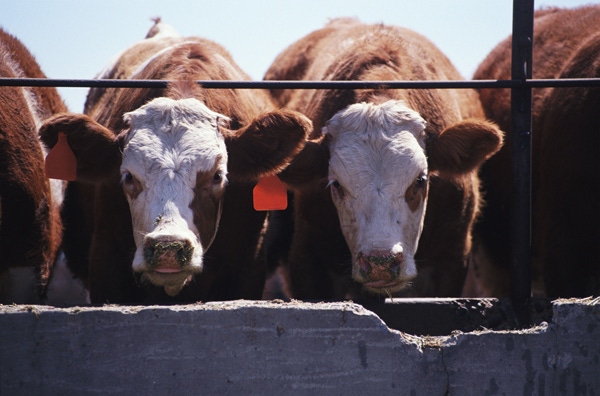April 19, 2011

Sky-high corn prices don’t typically outline “exciting opportunities” in the cattle business, but one economist says those in the stocker business can benefit from high feed costs by focusing on available forage.
“I think in the next 20 to 30 years, this industry is going to spend a lot of time trying to figure out how to raise high-quality beef with the least amount of grain. That means that every one of you [stocker cattlemen] has a tremendous opportunity, because it’s going to put an emphasis back on forage.”
That was Oklahoma State University agriculture economics professor Derrell Peel’s message at last month’s “Backgrounding for Quality” field day. The event, held at the Collinge Ranch near Hamilton, Kan., was sponsored by Certified Angus Beef LLC (CAB), Pfizer Animal Health and Pratt Feeders LLC.
The tightest grain supply in 15 years is only half the concern.
“We are extremely tight on cattle,” Peel said. The industry has liquidated cattle 13 of the past 15 years. As of January 2010, total cattle inventory was less than 93 million head, the lowest since 1959.
“We still don’t have any data that tells us that we are saving heifers,” he said. “I think we’re looking at 3 to 5 years, at least, before we fundamentally change herd numbers.”
So every cattlemen needs to make the most out of each calf they care for, but usually that quest for eking out more quality includes corn.
“Corn prices are probably not coming down any time soon. We’re in a whole new world,” Peel said. “It’s not a supply problem. We’ve continued to produce record levels, but the increased total demand for this product has made us barely able to meet our needs.”
The average price for corn during the past 25 years was $2.25 per bushel, less than one-third the level of many spring 2011 reports. Energy competitors for those bushels are not going away, even if policy changes, he said.
“How do we survive high corn prices? In the short run, we make changes by taking cattle into the feedlot at higher weights and utilize the forages we have as much as we can,” Peel said. “Longer term, I think we might have to re-evaluate how we feed cattle altogether. Long term, your forage business is going to take on an emphasis like it’s not had in 30 to 40 years.”
There is a glimmer of good news.
“The beef industry can survive higher corn prices better than pork or poultry,” he said. “We spent 50 years in this country trying to figure out how to allow cattle to eat the most cheap grain they could, and that was the right thing to do in that environment.”
The next few decades will focus on how to maintain quality while decreasing grain dependence, he said.
Just as the corn prices are sure to stay high, Peel predicts the same for beef prices.
“It always makes me nervous of course, when prices come on that fast that they’ll go away that fast. But this really is something that’s been building for a long time,” he said. “Fed cattle have increased relative to feeder cattle, relative to the calves and boxed beef; all of these prices have moved together. That tells me that these prices are proved by real market fundamentals.”
For more information on the meeting, search “Backgrounding for Quality” on the Black Ink Blog, www.blackinkwithcab.com.
You May Also Like




